










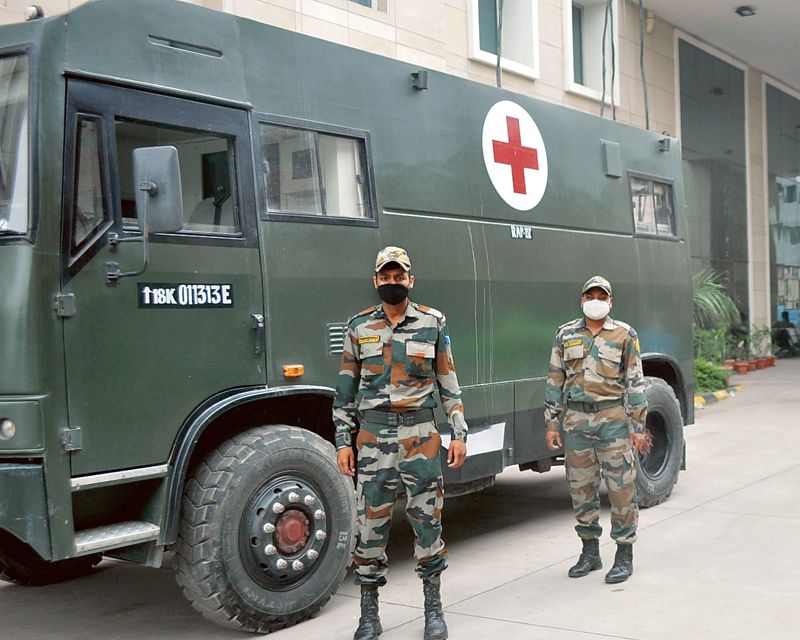
Yeoman service: The Army has excelled in providing medical services to its own personnel and the civilians. File photo
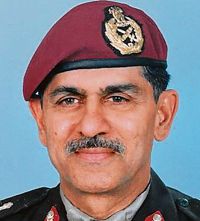
We often read about the brave deeds of the officers and jawans of our Army, whether they are fighting terrorists or maintaining a vigil and defending our borders. There are, however, those whose contributions remain unsung. Let us remember them today as we celebrate Army Day.
Consider a typical skirmish at the Line of Control (LoC) in the Kashmir valley to foil an infiltration attempt, quite often abetted by the Pakistan army. The terrorists are eliminated in the fire-fight, but one of our braves is grievously injured. His buddy pulls out his field dressing and bandages the wound to stop the blood flow. The unit’s Regimental Medical Officer (RMO) is alerted. He is aware that his timely action would make the difference between losing a life or a limb. So, he rushes forth along with his nursing assistants, unconcerned about his own safety.
Two more messages are flashed out —one to the advanced dressing station (ADS) and the other to the Army Aviation. As the injured is evacuated, the medical staff does a quick assessment of the seriousness of his injury. Will they be able to save his life or limb? How long before he goes into an irreversible shock due to loss of blood? They decide that an air evacuation to the Base Hospital is his best chance.
The Army Aviation unit, in the meanwhile, has already acted. A helicopter is readied for evacuation, complete with necessary medical equipment on board while the ground crew get it ready to fly. The aviators are already strapped into their seats and waiting. In a matter of minutes, the ‘cyclic is up and the stick goes forward’ and they are airborne; they know that they will receive the necessary briefing en route. Meanwhile, the injured jawan’s face lights up when he is assured that a ‘chopper’ is already on its way to take him to the Base Hospital.
Over the years, the sterling performance of the Army aviators and doctors has created certain undefined confidence among all ranks. The aviators have demonstrated exceptional skill and dedication in rescue and casualty evacuation (Casevac) operations. They have landed where only eagles would dare — cliffs, mountain slopes or hurriedly prepared ‘postage stamp-sized’ helipads, in foul weather, even putting their lives on the line.
The doctors, on their part, have routinely pushed the envelope of their performances. The medical staff often goes beyond its brief and its specific duties in giving treatment and carrying out exceptional surgeries under field conditions that have resulted in saving lives. Their timely assistance has benefited even the civilian population in the border areas. Army doctors, including veterinary doctors, regularly visit villages close to the LoC on ‘medical patrols’, treating people and livestock. The Base Hospital at Srinagar has a success rate of over 96 per cent in routine as well as life-saving surgeries, a truly enviable record.
Once during a heavy blizzard, road and landline communication had completely broken down in Badoab — a remote hamlet in the Gurez sector. A clutch of villagers approached the nearest Army post seeking medical assistance for a woman in labour. The RMO was away visiting the brigade headquarters and a nursing assistant (NA) was the only one present. The RMO could only be contacted over a radio communication link. The NA decided that he had to do something to save the lives of the woman and the unborn child. He got in touch with the RMO who asked the NA to follow his instructions step-by-step on the radio link; the NA did so and delivered the baby. It is rumoured that the mother named the baby after the NA, a South Indian lad.
At another time, a helicopter Casevac at a post in the Gulmarg sector unexpectedly turned difficult when it ran into a snowstorm which not only reduced visibility drastically but also completely obliterated the small helipad. Ordinarily, the mission should have been aborted but the aviators decided to challenge their skill for the sake of the casualty. As they approached what they estimated to be the helipad, they could barely discern some ghost-like figures — the men carrying the casualty. Literally, on a wing and a prayer, they kept lowering the chopper till it sat on a pile of snow. Soon, they were off again with the casualty safely on board. For the aviators, the flirting with danger soon seemed worth the risk when, after informing the injured man that he was being taken to the Base Hospital, he was heard saying, “I knew, sahab, that you will come, no matter what and the Base Hospital will make sure that I will survive.”
So, the next time you read about another heroic incident involving the Army, do think of the silent, unsung angels of mercy — the Army aviators and medical staff.
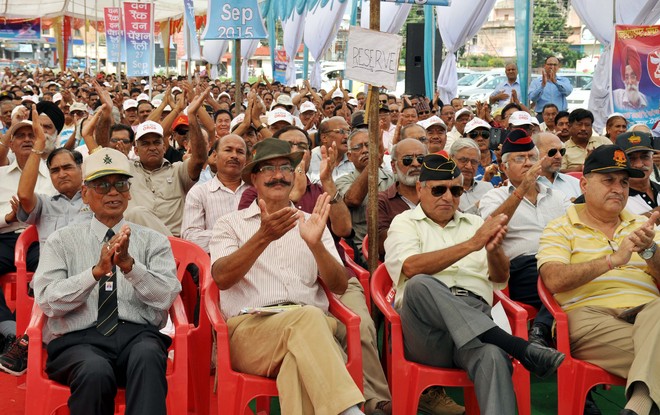
o clear all pending applications for welfare schemes, the Ministry of Defence has okayed Rs 320 crore. Photo for representation only. File photo
New Delhi, January 14
To clear all pending applications for welfare schemes, the Ministry of Defence has okayed Rs 320 crore. The money is for schemes especially for education and marriage grants for widows and dependent children of veterans of the forces. This would benefit over 1,66,000 wards and widows of ex-servicemen, the ministry said.
In a series of tweets, Defence Minister Rajnath Singh announced that the Department of Ex-Servicemen Welfare (DESW) has allotted Rs 320 crore to Armed Forces Flag Day Fund (AFFDF) to clear the backlog of pending applications for welfare schemes.
The MoD has launched three new initiatives for the welfare of ex-servicemen and their families on the Armed Forces Veterans’ Day, which is celebrated on January 14. It also launched a dedicated web portal for pension related issues. —
Troops on either side stand within rifle-shot range of each other at a small patch on what is called PP-15 or Hot Springs

Ajay Banerjee
New Delhi, January 14
Resolving the friction at Patrolling Point (PP)-15 in eastern Ladakh is now reduced to a small speck in the big picture of the tense India-China boundary equation. The 14th round of military commander-level talks on January 12 ended without a resolution to PP-15.
Troops on either side stand within rifle-shot range of each other at a small patch on what is called PP-15 or Hot Springs. It is no more than 5-km wide in the barren icy desert of Ladakh at an altitude of more than 16,000 feet.
The soldiers from both sides were not expected to move back from the Line of Actual Control (LAC) in immediate or near future, said sources. It would be incorrect to hope that a resolution to PP-15 would restore status quo as of April 2020, said a senior functionary. Even if the first step of disengaging from PP-15 is done, the LAC will not be what it used to be before April 2020.
Indian Army Chief General MM Naravane on January 12 was categorical on a three-step process to ease the standoff: disengagement of troops, de-escalation of tension followed by de-induction of all troops, weapons and equipment.
“Until that is done, India stays put at the LAC,” the General had said. As of now, even the first step of disengagement had not been competed, said sources.
The way the People’s Liberation Army (PLA) of China had deployed troops, weapons, guns and equipment all across the 3,488-km LAC, it made no military sense for India to move back from either eastern Ladakh or anywhere else, said a defence expert. India has relocated its troops from the western front to the northern borders.
All existing protocols on managing the boundary between the two nations stand breached. There is no guarantee that China will not make another unilateral attempt at altering the status quo at the LAC, which is not demarcated on ground. It was only a perception of either of the countries, said the expert.
For India to move back, it would have to factor in what was militarily called “differential of mobilisation”, meaning the time taken by either of the two Armies to mobilise in case of an exigency, said sources.
The Tibetan plateau is flat and the PLA has easy access. On the Indian side, the Himalayas hold the key to the approach to the plateau in Ladakh. The high mountain passes get snowed out and roads are closed. It takes a truck from Chandigarh or Jammu some three days to reach Leh. Guns and tank transporters could take even more time. The PLA could redeploy within six to eight hours.
Despite the roads, hauling of logistics and equipment is the problem across the Himalayas. This hurdle exists across Ladakh, Himachal Pradesh, Uttarakhand, Sikkim or Arunachal Pradesh, the states that share boundary with Tibet.
No border protocol
Himalayas vs Tibetan plateau mobilisation factor
India
In case of an exigency, Indian troops have to cross the Himalayas, which get snowed out in winter. A truck from Chandigarh or Jammu takes three days to reach Leh. Transportation of guns and ammo takes even longer.
China
The dragon nation only has to cross the Tibetan plateau, which is flat and the People’s Liberation Army of China has easy access to it. Moreover, China has built hi-tech infrastructure on its side of the LAC.
Govt has jeopardised close neighbours
The govt first surrendered our land and has now jeopardised our close neighbours by its inaction in pushing back China. If you don’t stand up for yourself, how will you stand up for your friends? — Rahul Gandhi, Congress leader
Army Day is observed on January 15
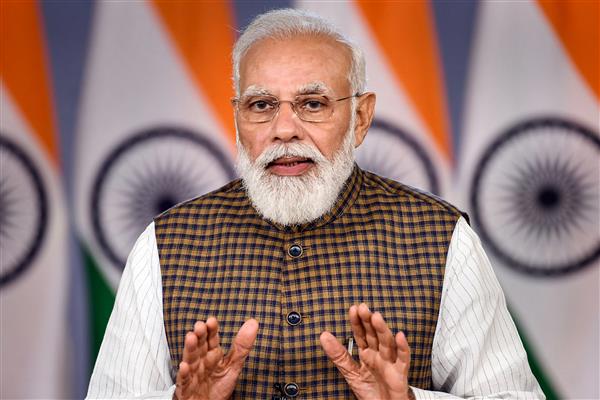
New Delhi, January 15
On the occasion of Army Day on Saturday, Prime Minister Narendra Modi lauded the Indian Army, saying it is known for bravery and professionalism, and words cannot do justice to its invaluable contribution towards national safety.
Army Day is observed on January 15 to mark Field Marshall KM Cariappa taking over as the first Indian Commander-in-Chief of the Indian Army, replacing his British predecessor in 1949.
“Indian Army personnel serve in hostile terrains and are at the forefront of helping fellow citizens during humanitarian crisis, including natural disasters. India is proud of the stellar contribution of the Army in Peacekeeping Missions overseas as well,” the prime minister said.
He added, “Best wishes on the occasion of Army Day, especially to our courageous soldiers, respected veterans and their families. The Indian Army is known for its bravery and professionalism. Words cannot do justice to the invaluable contribution of the Indian Army towards national safety.”
Court of Inquiry rules out sabotage or negligence

A Russian-built Mi-17V5 copter carrying the CDS, his wife Madhulika and his military attache, Brig LS Lidder among others crashed around noon on December 8 near Wellington in Conoor, Tamil Nadu. File photo
Ajay Banerjee
New Delhi, January 14
The Court of Inquiry into the Indian Air Force (IAF) helicopter crash, which killed Chief of Defence Staff General Bipin Rawat and 13 others, has said ‘disorientation’ of the pilots caused by an unexpected cloud is the cause of the crash.
It has ruled out mechanical failure, sabotage or negligence as cause of accident, a statement issued by the Indian Air Force said on Friday. The Court of Inquiry has submitted its preliminary findings, the IAF said.
“The accident was result of entry into clouds due to unexpected change in weather in the valley. This led to spatial disorientation of the pilot resulting in controlled flight into terrain (CFIT),” the statement said.
CFIT is term used when an aircraft crashes into the ground due to disorientation of the crew and not a technical glitch. A CIFT is noted as a common reason for crashes in bad weather, in mountainous regions.
A Russian-built Mi-17V5 copter carrying the CDS, his wife Madhulika and his military attache, Brig LS Lidder among others crashed around noon on December 8 near Wellington in Conoor, Tamil Nadu.
Air Marshal Manvendra Singh, Air Officer Commanding-in-Chief of the Training Command, who headed the Tri-service inquiry into the crash analysed the Flight Data Recorder and Cockpit Voice Recorder besides questioning all available witnesses to determine the most probable cause of the accident.
The Court of Inquiry has made certain recommendations which are being reviewed, the IAF said.
Meanwhile, as reported by the Tribune in its edition dated December 10, there was no distress call by the pilots and they had told the Air Traffic Controller (ATC) about descending to land at Wellington.
The armies of India and China are locked in a military standoff in eastern Ladakh since May 5, 2020
Army Chief General MM Naravane. PTI file
New Delhi, January 14
The Indian Army stands firm to counter any attempt to unilaterally change the status quo along the country’s borders and India’s desire for peace is born out of strength and should not be mistaken otherwise, Army Chief General MM Naravane said on Friday.
The Army Chief also said that differences in perceptions and disputes are best resolved through established norms based on the principle of equal and mutual security.
The armies of India and China are locked in a military standoff in eastern Ladakh since May 5, 2020, after a violent clash erupted in the Pangong lake area.
Both the countries have conducted 14 rounds of military-level talks to resolve the standoff.
“We stand firm to counter any attempt to unilaterally change the status quo along our borders. Our response to such attempts has been swift, calibrated and decisive as was seen when the situation so demanded,” Naravane said in his speech on the eve of Army Day.
Naravane said the Army has instituted additional safeguards to prevent any further attempts at military brinkmanship.
“We believe that the differences in perceptions and disputes are best resolved through established norms based on the principle of equal and mutual security,” he mentioned.
“Our desire for peace and tranquillity is born out of our inherent strength. It should not be mistaken otherwise,” he added.
Institutional mechanisms and safeguards to counter state-sponsored terrorism have been strengthened both along the borders and the hinterland, Naravane mentioned.
These mechanisms and safeguards have proven effective in lowering the levels of violence, he said.
“Our actions have demonstrated our capability and willingness to strike at the source of terrorism,” the Army chief mentioned.
In the year gone by, the Indian Army has resolutely executed its responsibilities and was steadfast in safeguarding the security and territorial integrity of the nation, he said.
India’s active borders were guarded with resolve and resilience, he mentioned.
“Our brave officers, JCOs (junior commissioned officers), and soldiers, have faced adversaries and adversity with courage and fortitude even to the extent to laying down their lives in the highest traditions of the Indian Army,” Naravane said.
The Indian Army remains at a high state of operational readiness to face ongoing and future challenges, he said.
After the violent clash on May 5, 2020, both—Indian and Chinese militaries—gradually enhanced their deployment by rushing in tens of thousands of soldiers as well as heavy weaponry.
As a result of a series of military and diplomatic talks, the two sides completed the disengagement process last year in the north and south banks of the Pangong lake and in the Gogra area.
Each side currently has around 50,000 to 60,000 troops along the Line of Actual Control (LAC) in the sensitive sector.
China’s exports to India from January to December rose 46.2 per cent to USD 97.52 billion, while India’s exports to China grew by 34.2 per cent to USD 28.14 billion
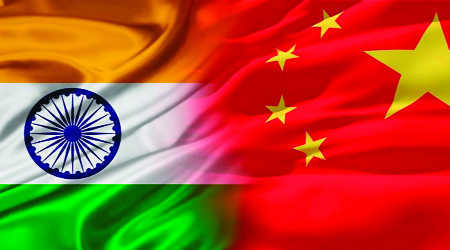
Beijing, January 14
The India-China bilateral trade touched a record high of over USD 125 billion in 2021, crossing the USD 100 billion-mark in a year when the relations hit a new low due to the prolonged standoff by the militaries in eastern Ladakh, while India’s trade deficit too mounted to over USD 69 billion, according to official data released on Friday.
The total trade between China and India in 2021 stood at USD 125.66 billion, up 43.3 per cent from 2020, state-run Global Times reported, quoting data from the General Administration of Customs.
China’s exports to India from January to December rose 46.2 per cent to USD 97.52 billion, while India’s exports to China grew by 34.2 per cent to USD 28.14 billion.
The trade deficit for India grew to USD 69.38 billion in 2021.
India has been highlighting its concerns over the growing trade deficit with China for over a decade and calling on Beijing to open its markets for India’s IT and pharmaceutical products.
Observers say much of China’s exports increase this year to India was attributed to the import of medical products and raw materials for India’s burgeoning pharmaceutical industry due to the massive second wave of COVID-19 and recurring bouts of the virus in the country.
The landmark increase of the bilateral trade crossing USD 100 billion went without much fanfare as the relations remained frosty over the lingering military standoff in eastern Ladakh.
The border standoff between the armies of India and China erupted on May 5 last year following a violent clash in the Pangong lake areas and both sides have gradually enhanced their deployment by rushing in tens of thousands of soldiers as well as heavy weaponry.
As a result of a series of military and diplomatic talks, the two sides completed the disengagement process in the Gogra area in August and in the north and south banks of the Pangong lake in February.
The two sides held the 14 round of Corps Commander-level talks on January 12 to resolve the standoff in the remaining areas and agreed to hold a new round of talks soon.
Each side currently has around 50,000 to 60,000 troops along the Line of Actual Control (LAC) in the mountainous sector.

























































